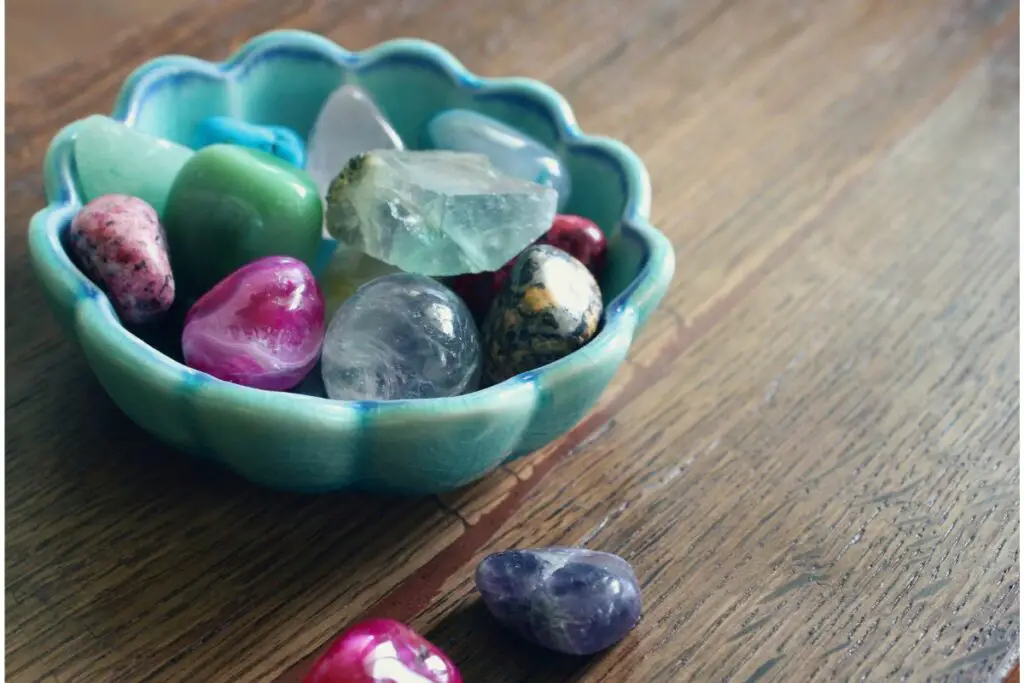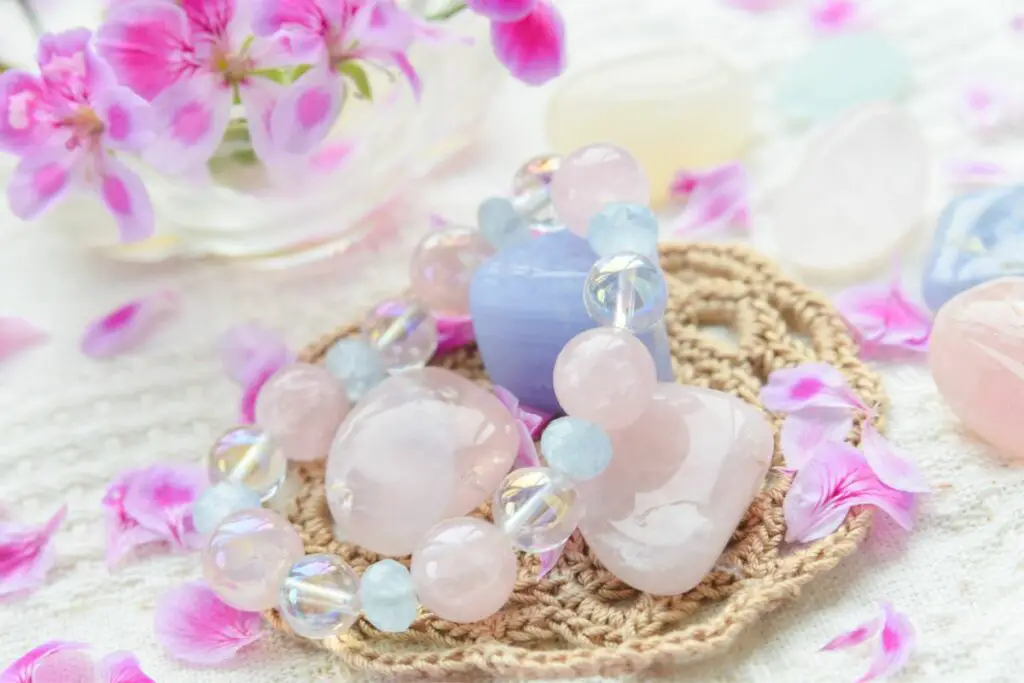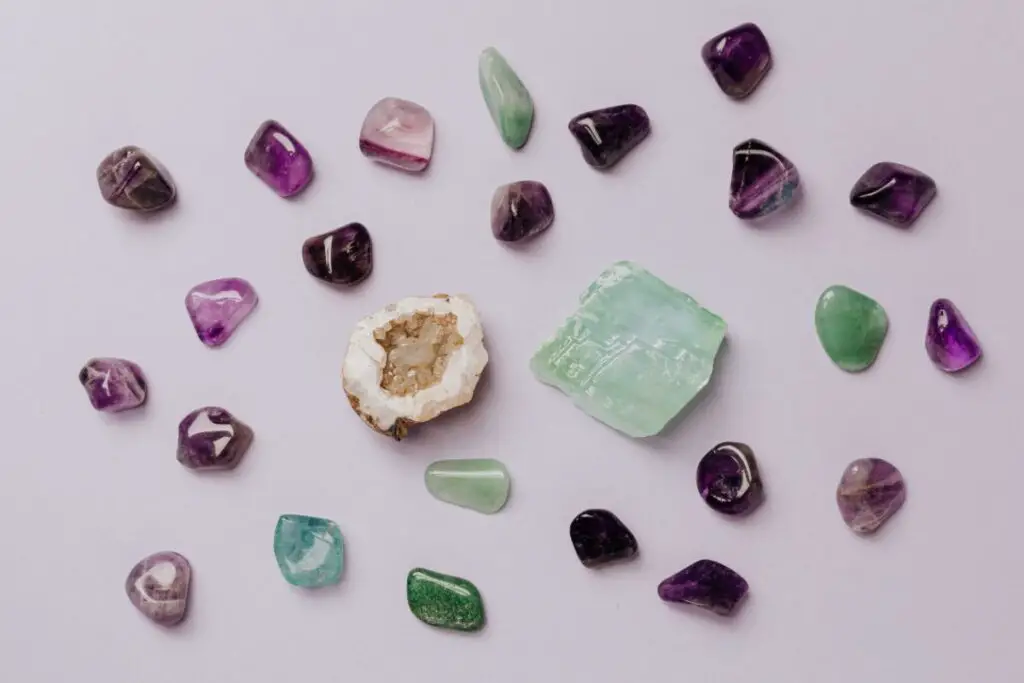Most people probably know that crystals have been a part of our civilization for a really long time. Ancient tribes used to cherish crystals and made use of them in many different ways.
For thousands of years, we have used crystals in jewellery, decoration, spiritual practices, healing, and so on.

However, despite their popularity, there is still some confusion about what crystals actually are and how they differ from rocks.
So, in this article, I am going to go back to the basics and try to answer this question: are crystals rocks? Keep reading to get clued up.
Are Stones And Crystals The Same Thing?
No, although in common lingo, people often use the words “rocks,” “stones,” and “crystals” interchangeably, these aren’t the same.
What Is The Difference Between A Rock And A Crystal?
Crystals and rocks are both natural formations that can be found in various sizes and colours.
So, let’s start by going over several points of differences between the two that will hopefully clear up any confusion.
1) Composition
What Are Rocks Made Of?
A rock is a solid mass found in the earth that forms naturally when two or more minerals are bound together. As such, rocks can be composed of a variety of minerals and organic matter.
A mineral is a naturally occurring substance with a specific chemical composition. For example, granite is a rock that is composed of minerals such as mica and feldspar.
Organic matter refers to shells or plant and animal material that can also be included in the composition of rocks.
Another point to note is that even though rocks can be composed of minerals and crystals, they can’t be called crystals themselves.
What Are Crystals Made Of?
Crystals, on the other hand, are made up of a repeating pattern of elemental molecules.
These molecules are arranged in a specific geometric shape, which is called the crystalline structure of the crystal.
It is this unique structure that gives crystals their unique shape and transparency.
Also, unlike rocks, crystals typically have molecules that are of a single type. For example, diamonds are composed of carbon.
2) Formation Process
There are primarily three types of rocks, each with its own formation process.
Igneous rock forms when magma or molten rock solidifies over time. This results in the formation of rocks like granite and basalt.
Sedimentary rocks form when sediment gets accumulated and compressed over time. This sediment, which can include sand, clay, or other materials, then gets transported by water or wind.
Over the course of years, this sediment gets cemented together to form sedimentary rocks. Examples include sandstone and limestone.
Metamorphic rocks involve the transformation of existing rocks due to heat and pressure. This can cause the minerals and crystals in the rocks to recrystallize. Examples include marble and slate.
Crystals, on the other hand, have a unique and well-known formation process known as crystallization. In this process, molecules in a liquid or gas arrange themselves into a repeating pattern to form a solid lattice structure.
There are many ways in which a crystal can form.
One common way is through evaporation. When a liquid solution evaporates, the concentration of molecules in the remaining solution increases.
This eventually leads to the formation of a crystal. This is what typically happens with sea salt.
How Are Crystals Formed In Rocks?
One way that crystals can form in rocks is by slowly cooling a magma or liquid solution.
As the temperature drops, the molecules slowly arrange themselves into a crystalline structure. If this happens inside magma, it leads to crystals forming inside rocks.

3) Shapes
Another point of difference between rocks and crystals is their relative shapes.
Rocks have a wide range of shapes and textures that are influenced by the way they are formed, the minerals they are composed of, and other factors like erosion and weathering.
For example, igneous rocks like granite can have a coarse-grained texture, while sedimentary rocks like sandstone can have a fine-grained texture.
However, when it comes to crystals, they usually have a defined geometric shape that is a result of their internal structure.
The shape of a crystal is determined by the pattern in which its molecules are arranged. As a result, crystals can have a variety of shapes, such as cubic, tetragonal, orthorhombic, and hexagonal.
4) Transparency
Another noticeable difference between crystals and rocks is their transparency. We all know that rocks are usually opaque. This is because rocks are made up of multiple minerals, which scatter light in all directions or block them altogether.
On the other hand, crystals can be transparent or translucent, depending on their composition and crystalline structure.
Many gemstones, such as diamonds, rubies, and sapphires, are highly transparent due to their crystal structure and composition.
Other crystals, like quartz, can be transparent or opaque depending on impurities or defects in the crystal lattice.
5) Hardness
Rocks can have a wide range of hardness depending on their composition and their formation process. For example, sedimentary rocks like sandstone are generally softer than igneous rocks like granite and basalt.
Crystals can also have a wide range of hardness depending on their composition and internal structure.
For example, diamond is the hardest mineral known, with a rating of 10 on the Mohs scale. But quartz has a hardness of 7.
Typically, it is said that most gemstones are harder than most rocks.
6) Uses
Let’s come to the final point of difference between rocks and crystals.
Rocks are used for a variety of purposes like construction, agriculture, energy, and even as decorative pieces.
Crystals, on the other hand, are used for healing, jewellery, industrial processes, and technological devices (such as watches and semiconductors).

Final Thoughts
If you’ve ever wondered what the difference between rocks and crystals are, or whether stones and crystals are the same, I hope this article has helped you decipher the difference.
Although there are some commonalities, crystals are not rocks.
For more reading, learn how to check if your crystals and stones are real.
- Pegasus Symbolism: Understanding The Spiritual Meaning And Dream Meaning Of Pegasus - November 5, 2023
- 50 Beautiful Moonstone Affirmations To Try - November 5, 2023
- The 6 Best Samhain Crystals To Work With This Spooky Season - October 23, 2023






